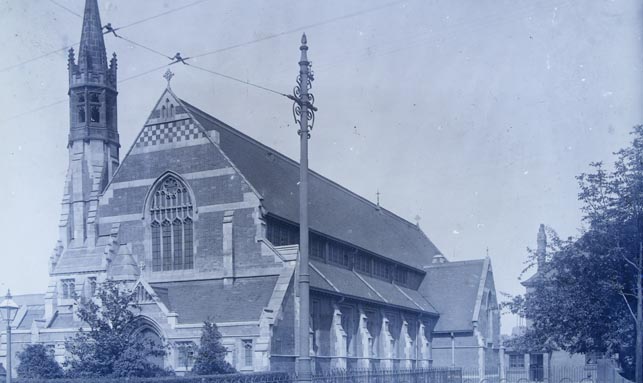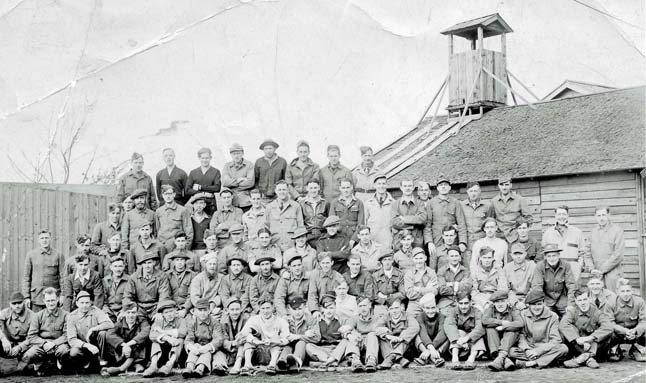Leicester has been a place of diverse culture and faith for some 2,000 years. A confirmed Roman temple has been discovered and references to other temples have also been found.
- The tomb of King Richard III is covered with a single slab of Swaledale fossil stone weighing 3 tonnes
- The Cathedral is dedicated to a Roman Officer who became a Bishop in the 4th Century and later a saint: St Martin of Tours
- The church was dedicated as Leicester’s Cathedral in 1927
The final resting place of King Richard III
Leicester Cathedral is at the physical heart of the Leicester, situated in Leicester’s Old Town. The Cathedral famously houses King Richard III’s tomb.
A long and rich history
The church was built on the site of Roman ruins and is dedicated to St Martin of Tours, a 4th century Roman officer who became a Bishop. It is almost certainly one of six churches referred to in the Domesday Book (1086) and portions of the current building can be traced to a 12th century Norman church which was rebuilt in the 13th and 15th centuries. In the Middle Ages, its site next to Leicester’s Guild Hall, ensured that St Martin’s became Leicester’s Civic Church with strong ties to the merchants and guilds of the town.
The building you see today is predominantly Victorian. The tower and 220 foot spire were designed by the architect Raphael Brandon and were rebuilt in the 1860s.
In 1927 St Martin’s was dedicated as Leicester’s Cathedral when the diocese was re-created, over 1,000 years after the last Saxon Bishop of Leicester fled from the invading Danes.
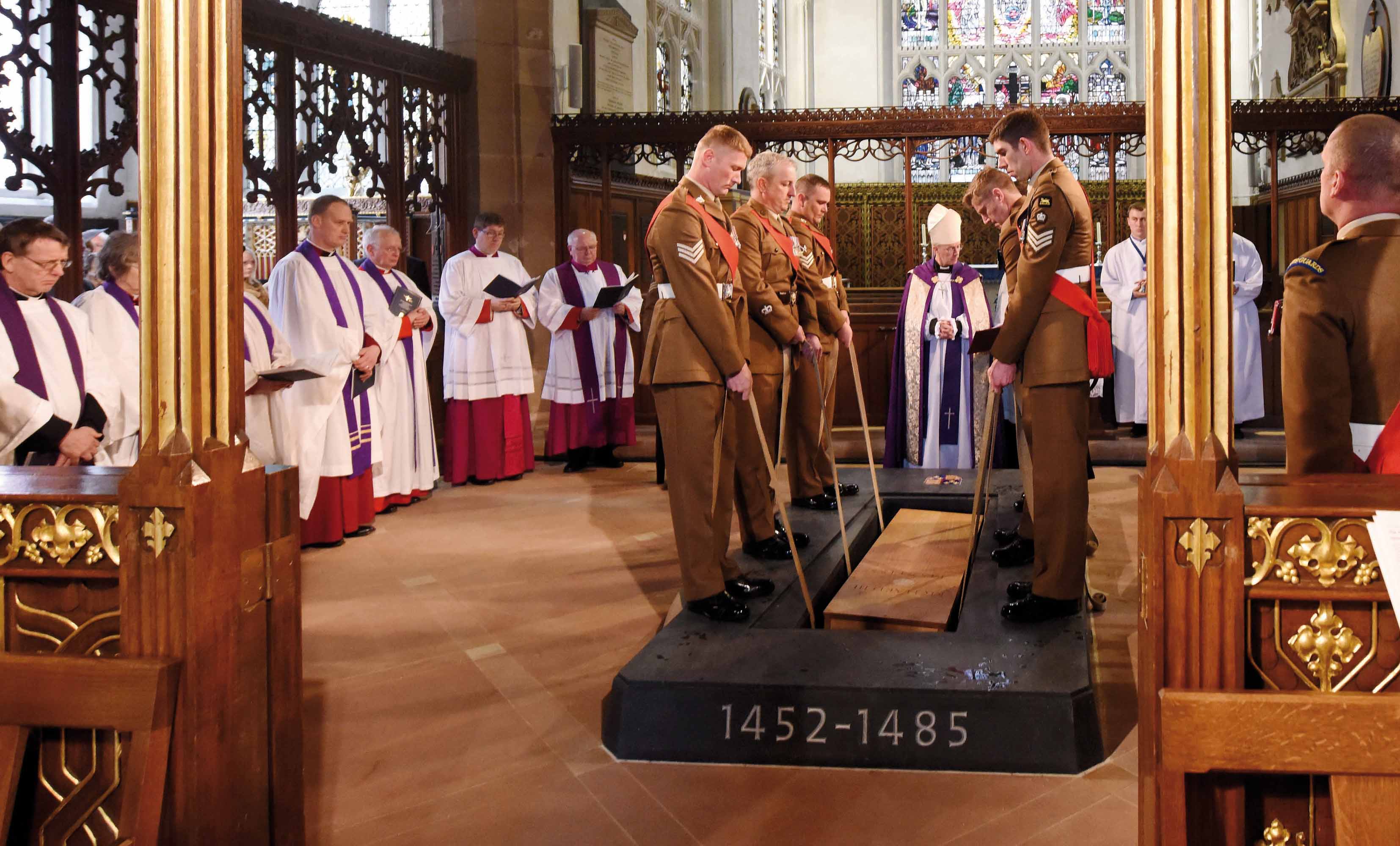
Fit for a king
Today over one hundred thousand people visit Leicester Cathedral every year, primarily to see the tomb of King Richard III, the last English monarch to die in battle. King Richard’s mortal remains were interred by the Archbishop of Canterbury in March 2015 after five days of commemoration events and activities around the city and county of Leicester. A magnificent tomb cut of a single piece of Swaledale fossil stone weighing 3 tonnes now covers his grave.
Inside, on permanent exhibition, is the Pall, a decorative cloth which covered King Richard’s coffin during his reinterment. It was designed and created by artist Jacquie Binns. The embroidery tells the story of King Richard’s life and the discovery of his body in a car park very near to the Cathedral.
Other items that can be seen inside the Cathedral include 14th century wooden carved figures, each “afflicted” with some kind of illness. One has a medieval hearing aid, while another is suffering from sore shoulders.
Open to the public all year round
The Cathedral and King Richard III’s tomb are open to the public 365 days of the year. There is no entry charge, but voluntary donations towards the overall costs of maintaining and running the Cathedral are greatly appreciated.
To find out how to visit the Cathedral and the tomb of King Richard III please see the Visit Leicester website.
Gallery
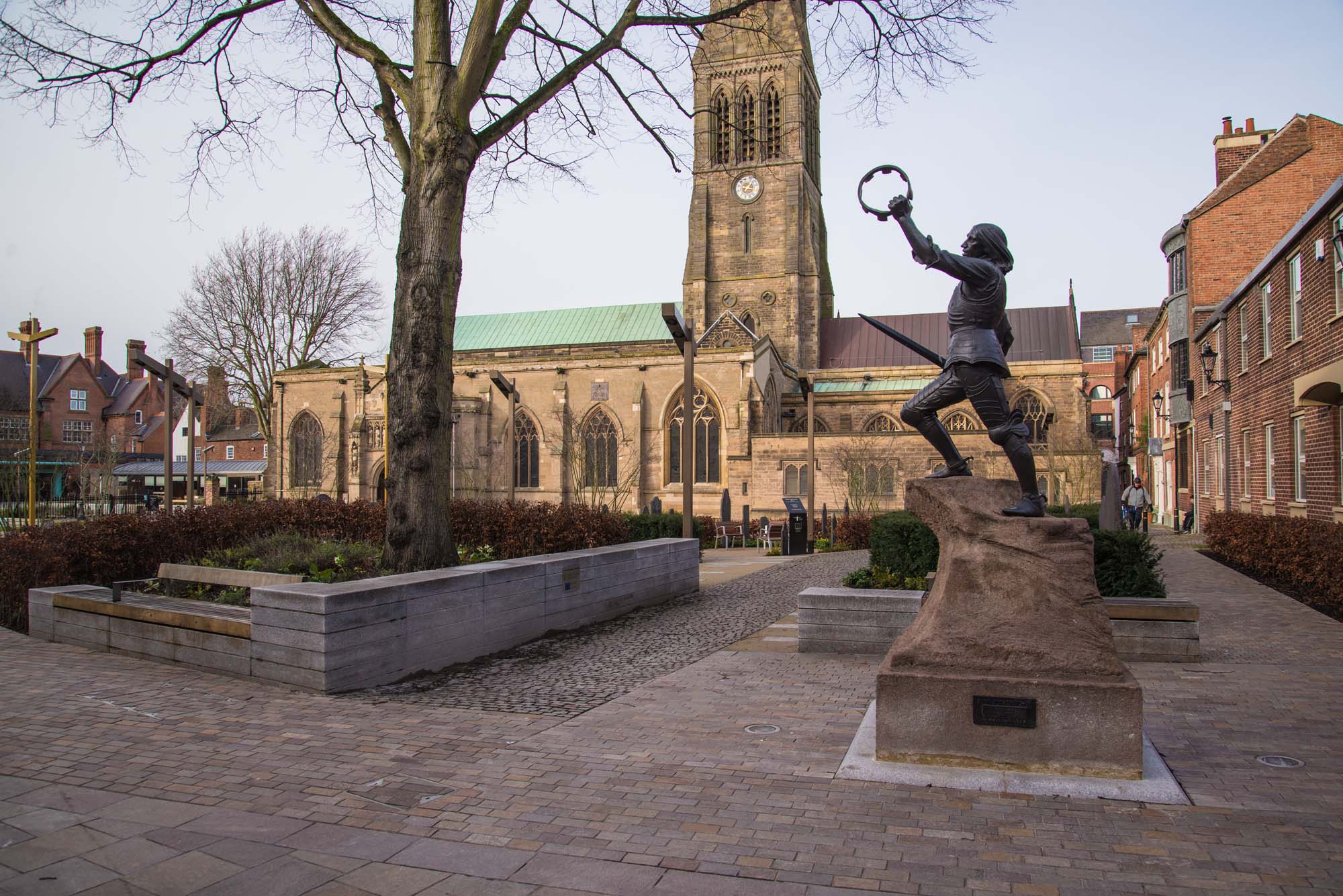
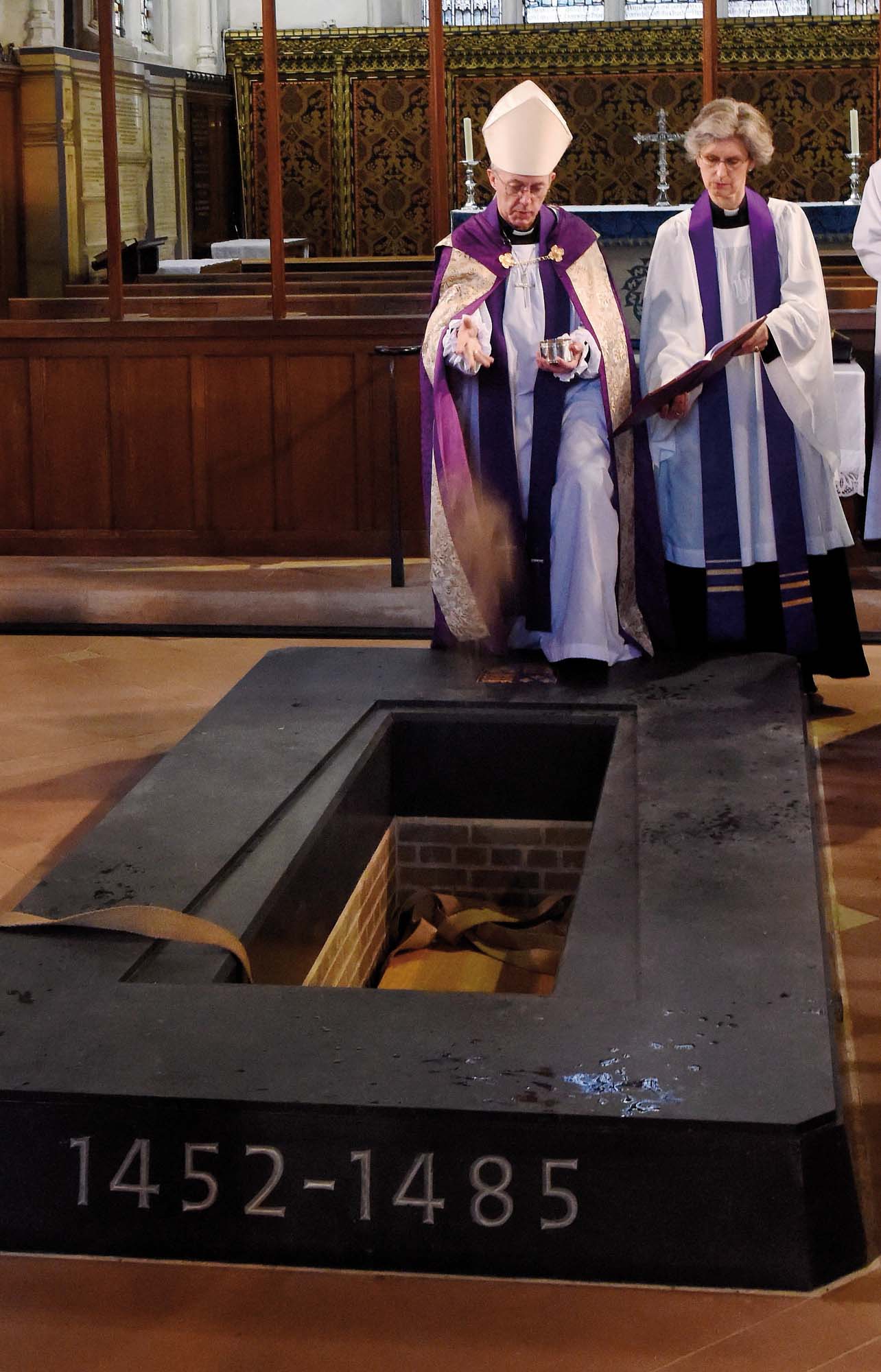
Leicester Cathedral

Leicester Cathedral
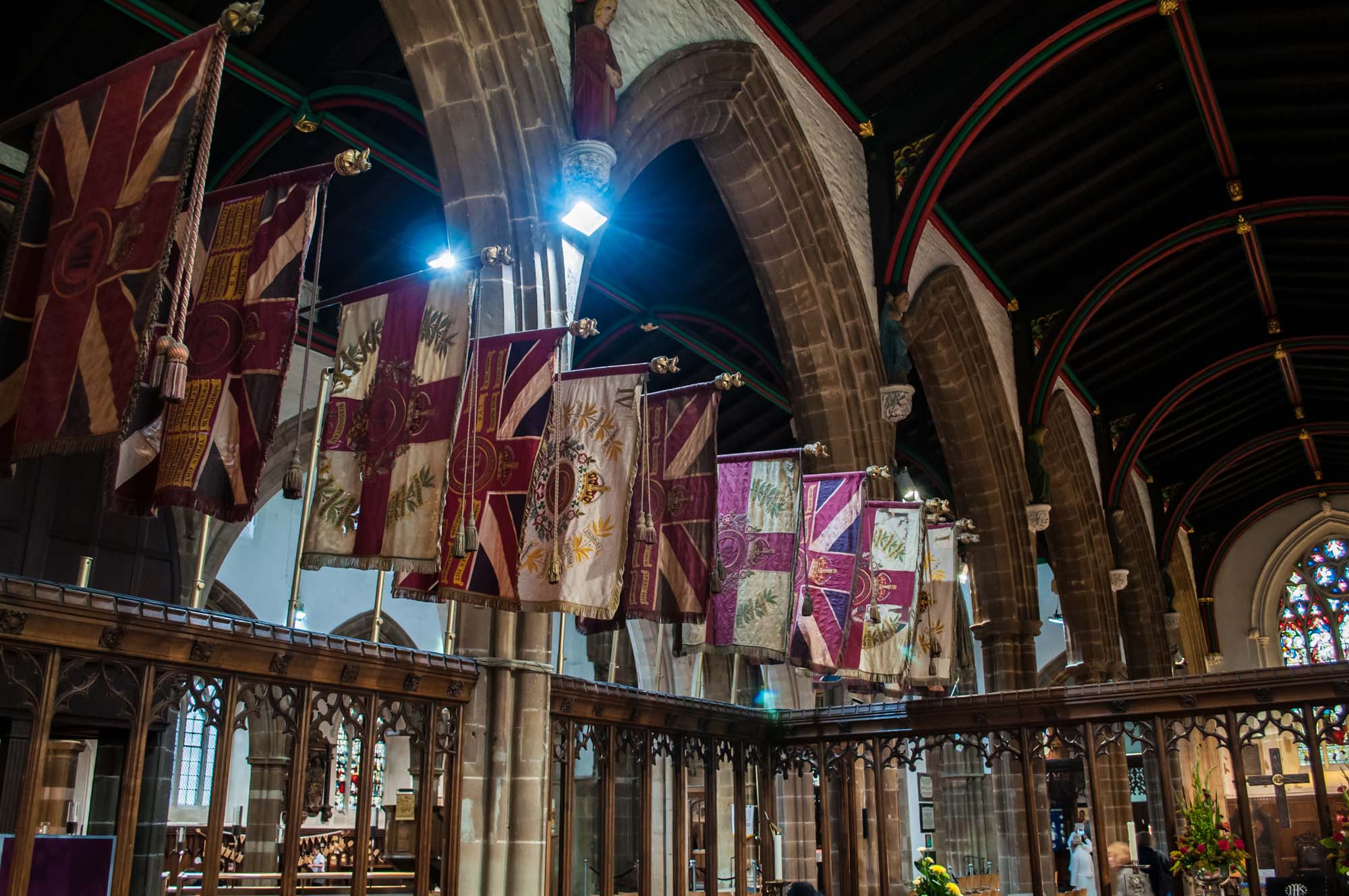
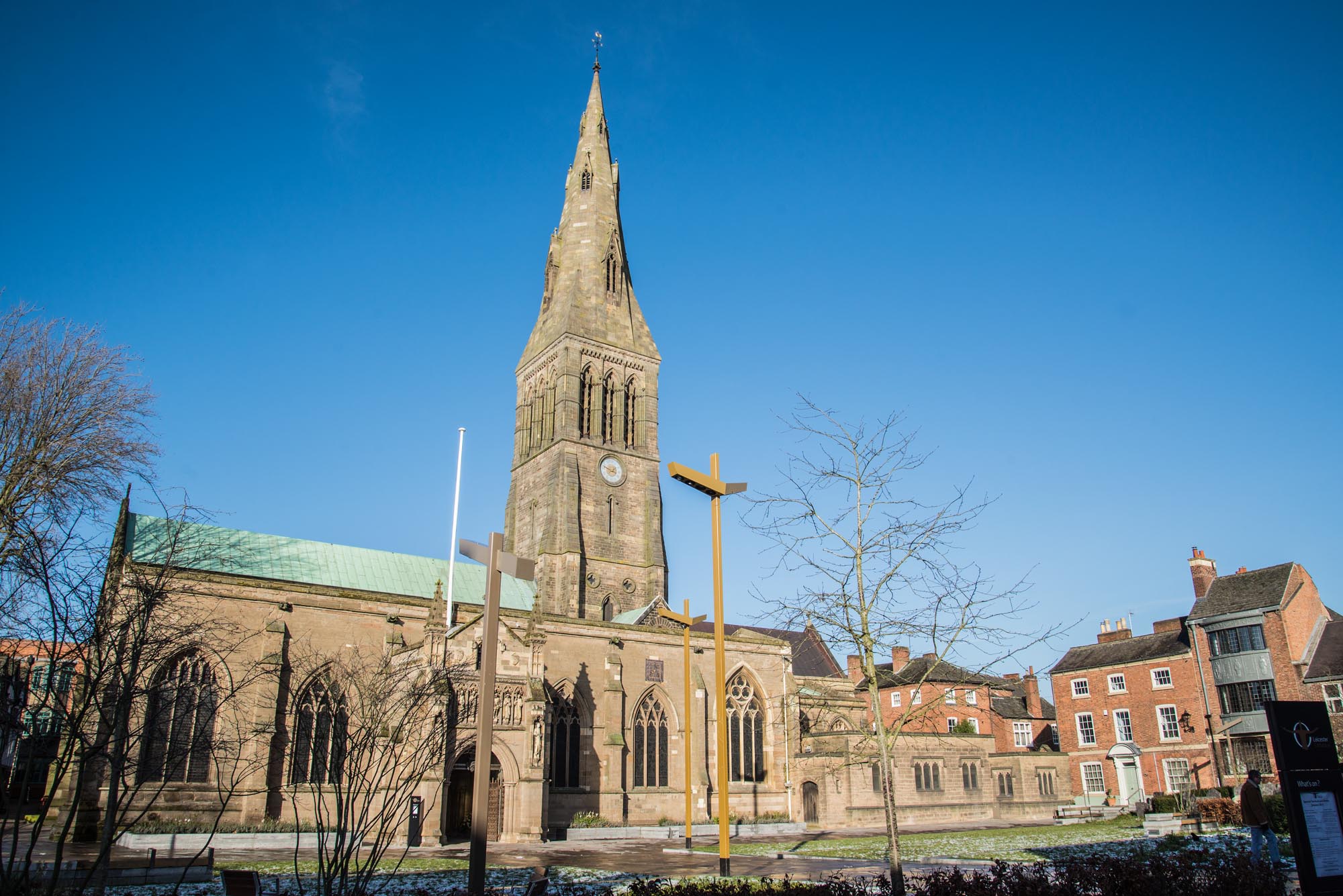
A City of Diversity
Roman Leicester
(47- 500) A military fort was erected, attracting traders and a growing civilian community to Leicester (known as Ratae Corieltauvorum to the Romans). The town steadily grew throughout the reign of the Romans.
Medieval Leicester
(500 – 1500) The early years of this period was one of unrest with Saxon, Danes and Norman invaders having their influences over the town. Later, of course, came Richard III and the final battle of the Wars of the Roses was fought on Leicester’s doorstep.
-
The Castle Motte1068

-
Leicester Cathedral1086

-
St Mary de Castro1107

-
Leicester Abbey1138

-
Leicester Castle1150

-
Grey Friars1231

-
The Streets of Medieval Leicester1265

-
Leicester Market1298

-
Trinity Hospital and Chapel1330

-
Bow Bridgecirca 1350

-
Church of the Annunciation1353

-
John O’Gaunt’s Cellar1361

-
Leicester Guildhall1390

-
The Magazine1400

-
The Blue Boar Inn1400

-
The High Cross1577

Tudor & Stuart Leicester
(1500 – 1700) The wool trade flourished in Leicester with one local, a former mayor named William Wigston, making his fortune. During the English Civil War a bloody battle was fought as the forces of King Charles I laid siege to the town.
Georgian Leicester
(1700 – 1837) The knitting industry had really stared to take hold and Leicester was fast becoming the main centre of hosiery manufacture in Britain. This new prosperity was reflected throughout the town with broader, paved streets lined with elegant brick buildings and genteel residences.
-
Great Meeting Unitarian Chapel1708

-
The Globe1720

-
17 Friar Lane1759

-
Leicester Royal Infirmary1771

-
New Walk1785

-
Freemasons’ Hall1790

-
Gaols in the City1791

-
Friars Mill1794

-
City Rooms1800

-
Development of Highfields1800

-
Wesleyan Chapel1815

-
20 Glebe Street1820

-
Charles Street Baptist Chapel1830

-
Glenfield Tunnel1832

Victorian Leicester
(1837 – 1901) The industrial revolution had a huge effect on Leicester resulting in the population growing from 40,000 to 212,000 during this period. Many of Leicester's most iconic buildings were erected during this time as wealthy Victorians made their mark on the town.
-
Leicester Union Workhouse1839

-
Campbell Street and London Road Railway Stations1840

-
The Vulcan Works1842

-
Belvoir Street Chapel1845

-
Welford Road Cemetery1849

-
Leicester Museum & Art Gallery1849

-
King Street1850

-
Cook’s Temperance Hall & Hotel1853

-
Amos Sherriff1856

-
Weighbridge Toll Collector’s House1860

-
4 Belmont Villas1862

-
Top Hat Terrace1864

-
Corah and Sons - St Margaret's Works1865

-
Kirby & West Dairy1865

-
The Clock Tower1868

-
Wimbledon Works1870

-
The Leicestershire Banking Company1871

-
St Mark’s Church and School1872

-
Victorian Turkish Baths1872

-
The Town Hall1876

-
Aylestone Road Gas Works and Gas Museum1879

-
Gas Workers Cottages1879

-
Leicestershire County Cricket Club1879

-
Welford Road Tigers Rugby Club1880

-
Secular Hall1881

-
Development of Highfields1800

-
Abbey Park1881

-
Abbey Park Buildings1881

-
Victoria Park and Lutyens War Memorial1883

-
Leicester Fosse FC 18841884

-
Leicester Coffee and Cocoa Company Coffee Houses1885

-
St Barnabas Church and Vicarage1886

-
Abbey Pumping Station1891

-
Luke Turner & Co. Ltd.1893

-
West Bridge Station1893

-
Thomas Cook Building1894

-
Alexandra House1897

-
Leicester Boys Club1897

-
Grand Hotel and General Newsroom1898

-
Highfield Street Synagogue1898

-
Western Park1899

-
Asfordby Street Police Station1899

-
Leicester Central Railway Station1899

Edwardian Leicester
(1901 – 1910) Electric trams came to the streets of Leicester and increased literacy among the citizens led to many becoming politicised. The famous 1905 ‘March of the Unemployed to London’ left from Leicester market when 30,000 people came to witness the historic event.
Early 20th Century Leicester
(1910 – 1973) The diverse industrial base meant Leicester was able to cope with the economic challenges of the 1920s and 1930s. New light engineering businesses, such as typewriter and scientific instrument making, complemented the more traditional industries of hosiery and footwear manufacturing.
-
Dryad Handicrafts1912

-
De Montfort Hall1913

-
Leicester During the First World War1914

-
Fox’s Glacier Mints1918

-
Statue of Liberty1919

-
Housing in Saffron Lane1924

-
Housing in North Braunstone1926

-
Lancaster Road Fire Station1927

-
The Little Theatre1930

-
Saffron Hill Cemetery1931

-
Braunstone Hall Junior School1932

-
Former City Police Headquarters1933

-
Savoy Cinema1937

-
City Hall1938

-
Athena - The Odeon Cinema1938

-
The Blitz in Highfields1940

-
Freeman, Hardy and Willis - Leicester Blitz1940

-
Leicester’s Windrush Generations1948

-
Housing at Eyres Monsell1951

-
Silver Street and The Lanes1960

-
Auto-Magic Car Park (Lee Circle)1961

-
University of Leicester Engineering Building1963

-
Sue Townsend Theatre1963

-
Central Mosque1968

Modern Leicester
(1973 – present day) Industry was still thriving in the city during the 1970s, with the work opportunities attracting many immigrants from all over the world. While industry has declined in recent years, excellent transport links have made Leicester an attractive centre for many businesses. The City now has much to be proud of including its sporting achievements and the richness of its cultural heritage and diversity.
-
Haymarket Theatre1973

-
The Golden Mile1974

-
Acting Up Against AIDS1976

-
Belgrave Neighbourhood Centre1977

-
Diwali in Leicester1983

-
Leicester Caribbean Carnival1985

-
Samworth Brothers1986

-
Jain Centre1988

-
Guru Nanak Dev Ji Gurdwara1989

-
King Power Stadium2002

-
LCB Depot2004

-
Curve2008

-
BAPS Shri Swaminarayan Mandir2011

-
Makers Yard2012

-
VJ75 Day2020

- Roman Leicester
- Medieval Leicester
- Tudor & Stuart Leicester
- Georgian Leicester
- Victorian Leicester
- Edwardian Leicester
- Early 20th Century Leicester
- Modern Leicester









































































